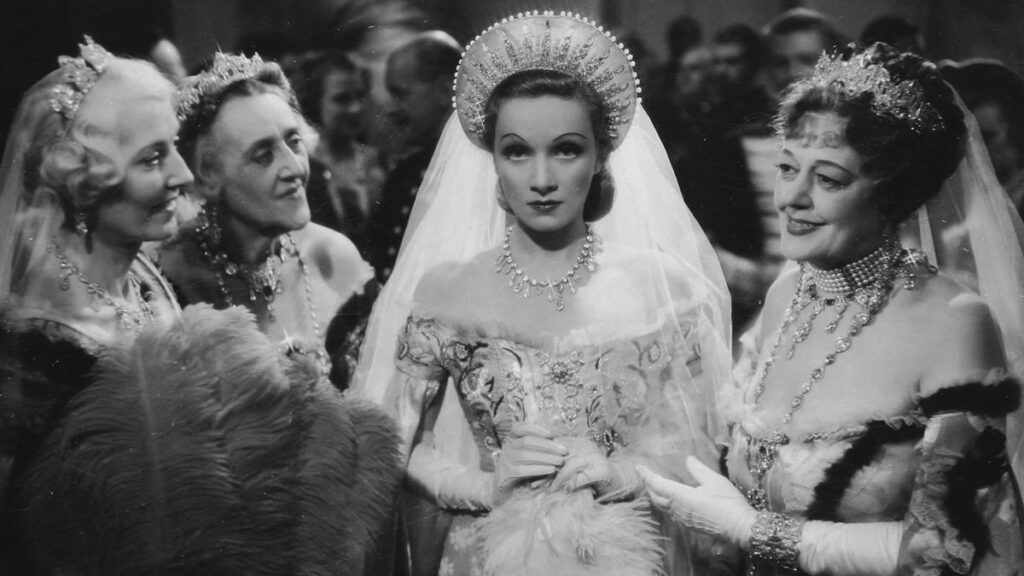
There are few things as fierce as Marlene Dietrich in our culture. The persona Dietrich created and Josef von Sternberg curated in the cinema is the stuff of legends. Entire books are dedicated to the legacy of the images these two partners gave the world. By the time they made The Scarlet Empress (1934) together they had already solidified their position as one of the most important collaborations between an actor and a director in film history.
Like Blonde Venus (1932) before it, The Scarlet Empress attempts to expand Dietrich’s range, exploring new facets of her persona. As Katherine the Great Dietrich evolves from a doe eyed innocent into a power hungry libertine. Dietrich’s performance is all camp; dripping with sensuality and a measured aloofness.
For von Sternberg The Scarlet Empress is style in overdrive. The mise-en-scène has a surreal quality that combines modern art with 18th century trappings. Everything is bathed in harsh shadows and the camera angles are deliberately obtuse. The Scarlet Empress, aesthetically, is the bridge between German Expressionism and Surrealism in film.
Additionally, von Sternberg makes a return to his roots in the silent cinema. Large sections of The Scarlet Empress have no dialogue or diegetic sound. These sequences and montages employ complicated superimpositions, fades, and cross-cutting that were the hallmarks of a cinema free from the burden of cumbersome audio recording equipment. Few filmmakers really utilized the film studio as well as von Sternberg did in the thirties. Every frame is meticulously designed and reliant upon the director exerting total control over every compositional element.
The Scarlet Empress is the high point of Dietrich and von Sternberg’s collaboration; all of the elements of their previous films for Paramount Studios come together flawlessly. One sees the kinky innuendos of Morocco (1930), the heartfelt tenderness of Blonde Venus, and years of silent film production all informing one another in one masterful exploration of the Dietrich image.
